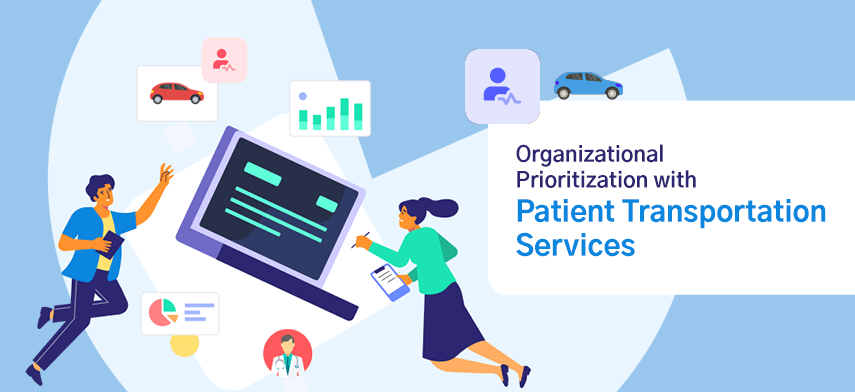As more research is being conducted on transportation management for patients, it has been observed that more than 5.8 million Americans suffer from delayed or missed healthcare appointments. Patients facing hindrances in reaching their designated appointments are because many of them don’t have the correct ride options available.

As we are moving forward into a technology-driven world, companies and businesses are turning patient transportation services into their assests instead of a cumbersome hailing process. Hospitals and healthcare systems upgrade their services with the ever-evolving technological advancements. It involves patient care, medical patient transportation management, development and engagement for clinicians, building and supporting delivery networks, reimbursement change adjustments, and more.
So what steps can healthcare organizations and facilities take to set patient transportation services as a priority?
Understanding the Patient Requirements to Provide Enhanced Transportation Management Solution
Patients provide feedback in several ways to the kind of requirements they are offered. By scanning these feedback and suggestions, it can reveal various insights regarding a patient’s facility transfer or discharge processes. These may or may not include transportation management solutions non-emergency medical transportation services.
Some of the necessary patient transportation services that signify assistance required in priority include:
- Specifying patient prioritization for payer: Since 1965, Medicaid provides coverage to non-emergency medical transportation service benefits that cover a vast percentage of Medicaid members that specify patient prioritization.
- Diminished utilization of personal or public conveyance: Senior patients and the aging population are less likely to have a car at their disposal, drive to their appointments, or avoid public transportation for their healthcare requirements.
- Acknowledging patient feedback: When patients are discharged or face a facility transfer procedure, they are more than likely to leave feedback or suggestions, including the patient transportation services process.
- Identifying transportation event reports: Identifying if the workflow in transportation management caused an event that could’ve been avoided or prevented as these events or near-misses are categorized.
- Retailer expenses on transportation services: Financial reporting or supply chain can assist in indicating the utility and facility of budget expenses that are directly proportional to patient transportation services.
- Restrictions affecting patient transportation: The extended stay at hospital or healthcare facilities or delay in discharge data of a patient can garner how internal restriction and obstructions can affect patient care transportation.
What to Expect Post Evaluation for Patient Transportation Services?
Once the evaluations and suggestions are done and in place, organizations usually tend to address and take initiative in enhancing patient care transportation for better service provision. Evaluating the performance improvement of enterprises or distinguishing the length of stay at a facility can be a good place to start incorporating and prioritizing patient transportation services.
Businesses and organizations that delved deeper into the root cause and understanding the patient care transportation was a key factor in organizational workflow enhancement, are now championing patient medical patient transportation services. They are addressing the problem patients face during transportation management services, and ensure to do a 360 turn around involving patient safety during and post-acute-care transportation.
Accumulating clinical as well as operational stakeholders and facilities bought in for transportation management services is one of the best ways an organization can advance in prioritizing patient transportation services.
With NEMTPulse’s constant support as a non-emergency patient transportation solution, helps organizations to build on their brand recognition, and gain trustworthy and loyal users.
With digitally integrated transportation services, complying with healthcare standards and requirements, health and healthcare systems have acknowledged the necessity of patient transportation services for their businesses. With access to wheelchair transportation, ambulatory care service, acute care, and post-acute-care transportation, and many more transportation accessibility, NEMTPulse as a HIPAA-compliant service, offers providers, payers, and health and healthcare system that prioritization they need with patient transportation services.

Final Thoughts,
Every healthcare organization and facility is unique in its way. The patient mix, geographic and demographic data, revenue collection, and more are similarly different as well. As research suggests, patients are avoiding or delaying their health appointments due to lack of rides or lack of transportation needs. Hence, healthcare systems are experiencing restrictions when patients are without a ride post-discharge.
With patient transportation services, patients are offered a reliable source of a safe and secure ride back home. Patient care transportation enhances better at-home care delivery and reduced hospital readmissions for seniors and chronically ill patients. Thus, patient transportation systems have become an organizational priority for most healthcare facilities.

Author's Bio
